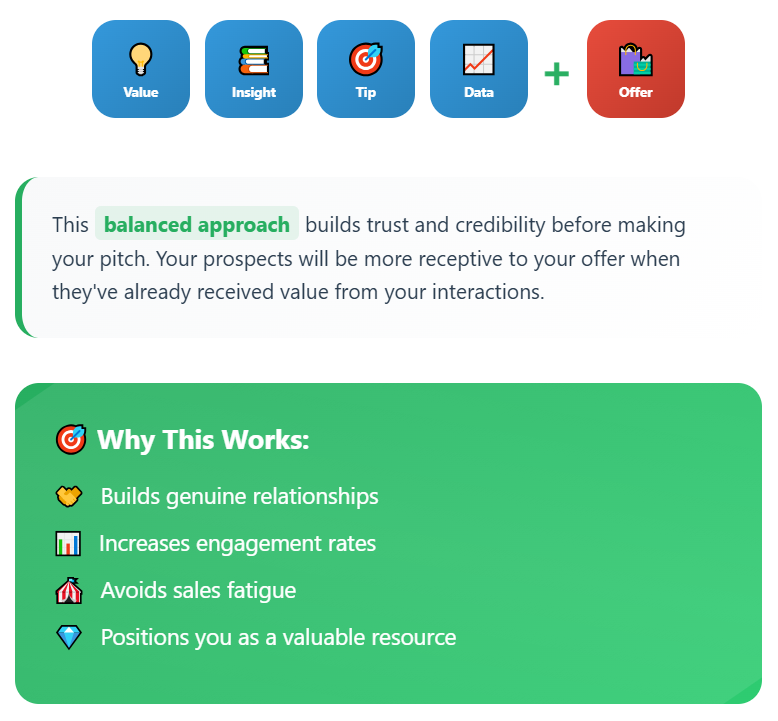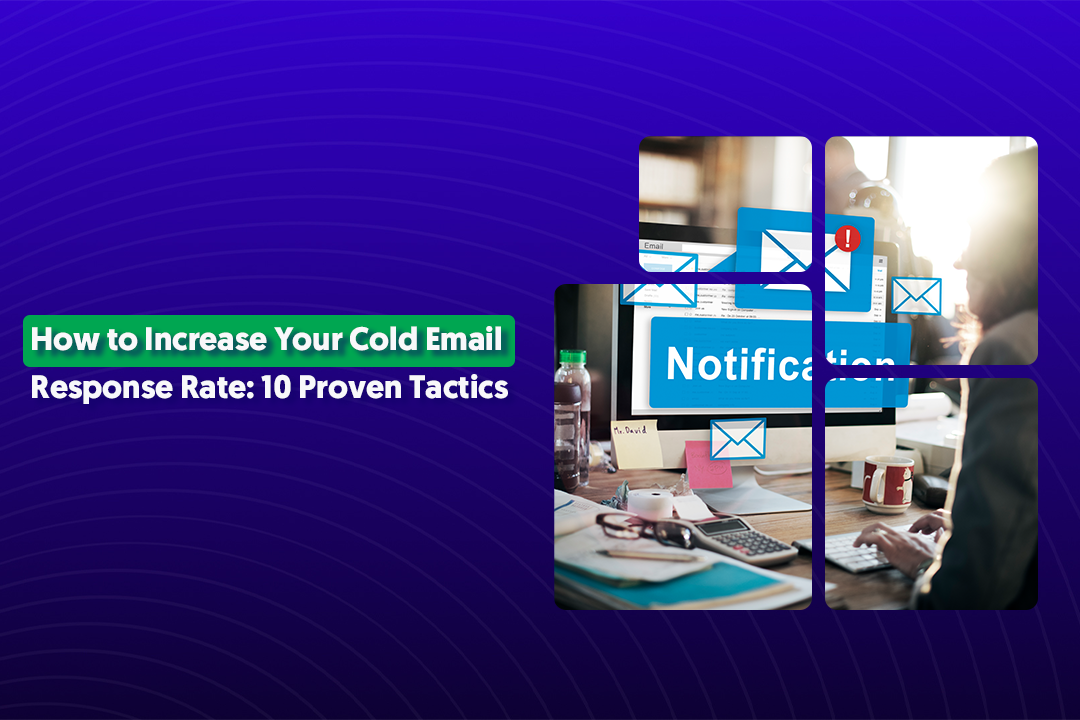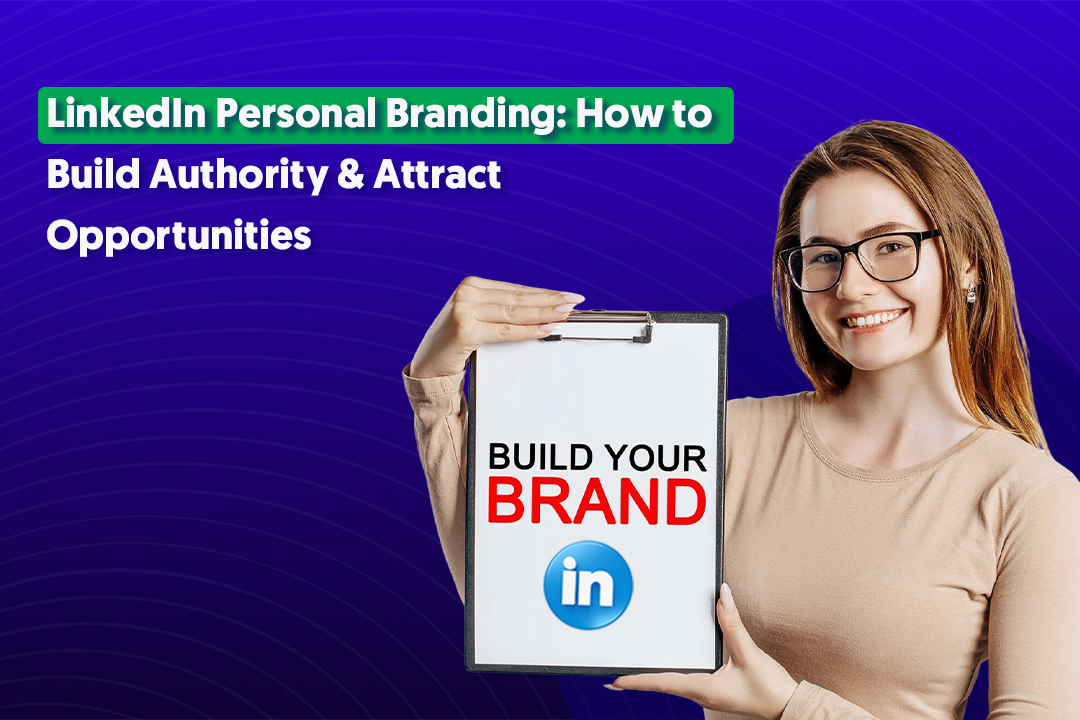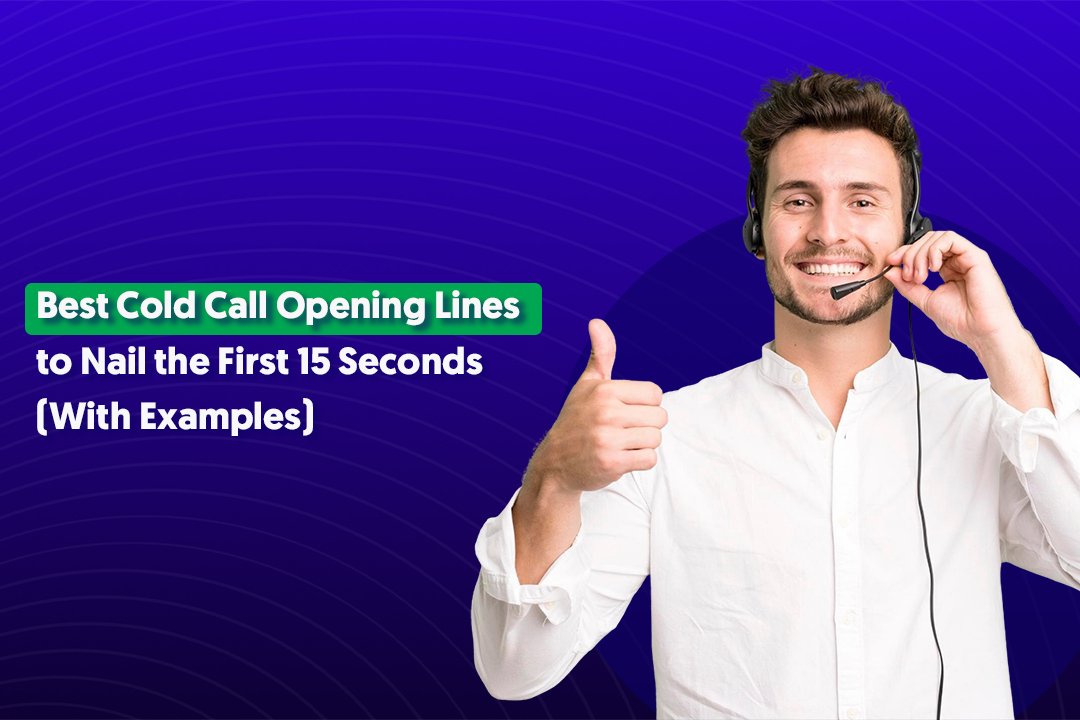Key Takeaways
- A LinkedIn funnel strategy turns your profile into a lead-gen machine by moving prospects through awareness, nurture, and proposal stages.
- Use LinkedIn prospecting tools to find and connect with your ideal B2B audience.
- Smart nurturing, through content, messaging, and retargeting, is where most of the trust (and magic) happens.
- Automation should support, not replace, human-like interactions.
- Avoid common pitfalls like over-automation, weak CTAs, and poor targeting.
- When done right, LinkedIn B2B lead gen is scalable, trackable, and a powerful revenue driver.
In 2025, smart companies aren’t just using LinkedIn to post content or send a few cold messages. They’re building full-blown LinkedIn funnel strategies designed to guide prospects from first touch to signed proposal.
And, when done right, the results are powerful: More LinkedIn sales leads, higher reply rates, and a predictable flow of qualified opportunities.
But success doesn’t happen by accident. It comes from having a system, a repeatable, optimized LinkedIn B2B lead gen funnel that maps perfectly to how decision-makers behave on the platform.
In this guide, we’ll break down the full funnel approach:
- How to prospect like a pro using smart targeting and outreach
- How to nurture leads through content, messaging, and retargeting
- How to move warm leads into proposals and sales conversations
Along the way, we’ll show you the tools, automation frameworks, and insider tricks (like the LinkedIn B2B funnel hack) used by top-performing campaigns, and how you can apply them to your own.
What is a LinkedIn Funnel?
If you're in the B2B space, you've probably heard a lot about marketing funnels. But what does a "LinkedIn funnel" actually mean, and more importantly, how do you build one that drives results on the world’s #1 B2B networking platform?
At its core, a LinkedIn funnel strategy follows the classic AIDA model—Awareness → Interest → Desire → Action—but it's tailored to the way professionals engage on LinkedIn.
Think of it like this:
- Awareness – You’re putting yourself on the radar. This could be through LinkedIn content (posts, carousels, videos), thought leadership, or paid LinkedIn ads.
- Interest – You’re starting a conversation. Maybe your content got their attention, or you engaged with their posts. This is also where connection requests and light engagement come into play.
- Desire – Now they're considering you. You're sharing case studies, social proof, or maybe a free offer. This is the time to nurture with helpful messages and insights.
- Action – Your prospect is ready to take the next step. This could be booking a call, requesting a proposal, or joining a webinar.
Here’s where it gets powerful: A well-built funnel LinkedIn approach doesn't rely on just one channel.
Instead, it blends multiple touchpoints—organic content, targeted outreach, strategic nurturing, and yes, even paid ads—to move prospects seamlessly through the funnel.

LinkedIn Is a Funnel, But Smarter
Unlike generic marketing funnels, a LinkedIn B2B funnel hack is all about precision. You're not casting a wide net, you're building relationships with the exact people who matter to your business.
And with LinkedIn funnel automation, tools and systems can help you scale without losing the human touch.
In short, the LinkedIn funnel isn't just a concept—it's a practical, high-ROI system that works especially well in the B2B world. And when executed well, it doesn’t just bring leads—it builds relationships that convert.
Stage 1 – LinkedIn Prospecting
The journey through your LinkedIn funnel starts here—with prospecting. This is the part where we go from zero to “Hey, I think we should talk.”
What is Prospecting on LinkedIn?
Let’s start with a quick LinkedIn prospecting definition: Prospecting is the process of identifying and initiating contact with potential customers.
On LinkedIn, this means finding the right decision-makers and starting meaningful conversations—without being that annoying sales rep who jumps straight into a pitch.
In the context of a B2B LinkedIn funnel, prospecting is your top-of-funnel (TOFU) activity. It’s all about creating awareness and starting relationships that you’ll later guide down your funnel toward conversion.
Unlike cold calling or mass email blasts, LinkedIn prospecting to generate inbound leads is more strategic, more targeted, and when done right more human.

Tools and Techniques for Effective LinkedIn Prospecting
So, how do you do LinkedIn prospecting without wasting hours scrolling through profiles? The answer: smart segmentation and the right tools.
🔧 Top LinkedIn Prospecting Tools:
- LinkedIn Sales Navigator – The gold standard for filtering by job title, industry, seniority, company size, and more.
- Apollo.io – Great for combining LinkedIn data with verified emails and intent signals.
- Cleverly Platform – (Yep, that’s us!) Automates your outreach while keeping it personalized—ideal for scaling without spamming.

With the right tools, you can target leads who are actually a good fit for your offer, not just anyone with a profile.
🧠 Smart Segmentation Tips:
- Job Title & Role – Are you targeting VPs of Marketing or Founders of SaaS startups?
- Seniority Level – Tailor your messaging for decision-makers vs influencers.
- Industry Focus – A personalized message to a fintech lead should read differently than one to someone in manufacturing.
- Buying Intent Signals – Recent funding, job changes, content engagement—these are gold.
✉️ Outreach Framework:
Think of your outreach like a warm handshake—not a cold pitch.
- Connect – Send a short, friendly note.
- Warm Up – Engage with their content or drop a thank-you message.
- Message Flow – Introduce your value, share social proof, and invite them to chat.
📝 Example Connection Request Copy:
“Hi [First Name], I came across your profile while looking for [industry] leaders driving growth. Thought it’d be great to connect and share insights!”
It’s short, relevant, and non-salesy—exactly what performs best.
By starting with smart LinkedIn prospecting and leveraging powerful LinkedIn prospecting tools, you're not just collecting connections—you’re starting high-value conversations.
And if you’re wondering how to scale this across hundreds (or thousands) of leads per month without burning out, that’s exactly where Cleverly steps in.
Our done-for-you LinkedIn lead generation campaigns have generated over $312M in client pipeline—all through strategic, data-backed LinkedIn outreach.
Stage 2 – Nurturing Through Content and Messaging
You’ve connected. Maybe even exchanged a few messages. Now what?
This is where nurturing comes into play—the second stage of your LinkedIn funnel strategy and the bridge between connection and conversion.
It’s all about building trust and staying top-of-mind until your leads are ready to take action.
Keeping the Conversation Alive (Without Being Pushy)
After the first touchpoint, most LinkedIn sales leads aren’t going to jump straight into a demo or proposal—and that’s okay.
The real power lies in the follow-up: continuing to show value through a mix of content and messaging that resonates.
Here’s what nurturing looks like in action:
✅ Organic Nurturing
- Post content that builds authority – Share insights, results, lessons learned, or client wins that speak directly to your ideal audience.
- Engage with your leads’ content – Comment meaningfully on their posts. React to updates. Show up consistently.
- DM with value, not just reminders – Share a relevant article, a new report, or even a quick note about something you saw them post.
Example post:
This kind of LinkedIn B2B lead gen is subtle but powerful—it positions you as a trusted resource, not just another vendor.
💰 Paid Nurturing: LinkedIn Ads Funnel
If you’re working with a high-value offer or targeting large accounts, LinkedIn ads are your best friend.
With LinkedIn’s ad tools, you can show tailored content to:
- People who viewed your profile
- Leads who clicked links in your InMail
- Contacts from your CRM via matched audiences
It’s nurturing at scale. To advertise properly on LinkedIn, always think about keeping your brand in their feed as they consider their next move.

🧲 Using Lead Magnets to Provide Value
Want to go a step further? Use lead magnets to deepen engagement:
- Whitepapers or industry reports
- Webinars or live training sessions
- Case studies showcasing real ROI
These give your leads a reason to engage while positioning your brand as a serious solution provider.
💬 Mini Campaigns & the 4+1 Rule
One smart move? Create mini nurture campaigns using message sequences like:
- Post-connection follow-up → Lead magnet → Case study → “Soft pitch” message
Or try the 4+1 rule: Share 4 valuable, non-salesy messages or posts, then 1 offer. It keeps things balanced and avoids overwhelming your prospect with sales talk.

Stage 3 – Driving Proposals and Sales Conversations
By now, your prospect knows who you are. They’ve seen your content, engaged with your messages, maybe even downloaded a resource or two.
This is the stage where smart LinkedIn funnel strategy turns attention into action.
It’s time to move from nurturing to closing—booking that sales call, sharing a proposal, and starting real conversations that lead to revenue.
How to Know When a Lead is Ready
You don’t have to guess when a lead is getting warm. In fact, LinkedIn sales leads often give off subtle signals that they’re ready to take the next step:
- They reply positively to your nurture messages
- They engage with multiple posts or comment frequently
- They accept your connection and respond with curiosity
- They click on links to your lead magnets, case studies, or offer pages
These are all conversion cues—your sign that it’s time to extend the invitation.
When and How to Pitch Your Offer
The pitch shouldn’t come out of nowhere. Even in B2B, we’re all people—and people hate being sold to too early. But once interest is clear, you can shift into CTA mode.
Here are a few cold-to-warm CTA examples that convert:
“Really appreciate the engagement on the [topic] post! If you're exploring better ways to [solve a specific problem], I'd be happy to share a quick playbook that’s worked well for clients.”
“Not sure if this is relevant right now, but we recently helped [client type] generate [result] with a similar challenge—worth a quick chat?”
“If you’re open to it, here’s my calendar—happy to share what’s working in [your niche] right now.”
It’s conversational, non-pushy, but clear. That’s the key to a high-performing LinkedIn B2B funnel hack.

Tools That Make Closing Easier
Make it frictionless. Once a lead is ready, don’t make them jump through hoops to talk to you. Use tools like:
- Calendly or Chili Piper for instant booking
- Loom or Vidyard to send short, personalized video pitches
- CRM integrations to track deal stages and follow-ups
At this stage, it’s about removing barriers and making it as easy as possible for the lead to say, “Yes, let’s talk.”
Where Proposals Fit in Your LinkedIn Sales Funnel
Your proposal isn’t the end of the funnel—it’s the bridge to your pipeline.
When you’ve properly nurtured a lead and moved them into a sales convo, the proposal feels like a natural next step—not a surprise.
And when your LinkedIn funnel strategy is dialed in, proposals become predictable, repeatable, and scalable.
LinkedIn Funnel Automation and Scaling Strategies
Once your LinkedIn funnel strategy is working on a small scale, the next logical step is to automate and scale it—without losing the human touch that makes it work in the first place.
That’s where LinkedIn funnel automation comes in.
Imagine this: Your outreach, follow-ups, nurture messages, and even retargeting flows are running in the background—consistently and safely—while you focus on closing deals. It’s not just efficient; it’s necessary if you want to grow.
Automation Tools to Manage Your Entire Funnel
From the first connection request to the final follow-up message, automation tools can help manage every stage of the funnel.
Some of the best LinkedIn prospecting tools and platforms that support full-funnel workflows include:
- Cleverly – Our LinkedIn automation platform automates prospecting, messaging, and follow-ups, all while keeping it personalized (and safe).

- HubSpot + LinkedIn integration – Track funnel stages and engagement within your CRM.
- Zapier workflows – Automate lead capture, calendar bookings, and email sequences.
These tools act like a LinkedIn funnel builder, creating structured, repeatable systems that don’t rely on daily manual effort.
Safe Automation: Why It Matters
LinkedIn has gotten smarter—and stricter—about automation. That’s why it’s crucial to use safe automation tools that mimic real human behavior.
That means:
- Customizable time delays between messages
- AI-written messages that sound like you, not a robot
- Activity limits to stay under LinkedIn’s radar
- Warm-up features to protect your account reputation
At Cleverly, for example, we’ve fine-tuned our automation systems to comply with LinkedIn’s safety protocols—so you scale without getting flagged.
Segmenting Your Funnel for Precision
The real beauty of automation is that it gives you room to segment and personalize at scale. Use CRM data + LinkedIn targeting to create mini-funnels based on:
- Industry or job role
- Funnel stage (new connection vs warm lead)
- Engagement signals (clicked, replied, downloaded)
- Buying intent or sales-readiness
This ensures you’re not sending the same message to everyone—you’re sending the right message to the right person at the right time.
Automation That Feels Personal
Scaling doesn’t mean sounding robotic. With smart LinkedIn funnel automation, you can create sequences that feel 1:1 while running 100+ conversations at a time.
Think about:
- Adding first names, job titles, or company names dynamically
- Referring to a recent post or mutual connection
- Scheduling follow-ups based on actual interaction timing
This balance—automated but personal—is what separates average outreach from scalable success.
Final Thoughts – Building a Full-Funnel LinkedIn Lead Gen Machine
Let’s bring it all together.
A high-performing LinkedIn funnel strategy isn’t just about one clever message or one good post. It’s about creating a full-funnel system that consistently moves the right people from prospect → nurture → proposal.
With the right mix of strategy, tools, and human connection, LinkedIn can become your most powerful B2B growth engine.
Here’s what that looks like:
- Using smart LinkedIn prospecting to connect with your ideal buyers
- Nurturing them through engaging content, messages, and retargeting
- Converting leads into booked calls and real revenue opportunities
And when you combine automation with personalization, that system becomes scalable. Repeatable. Predictable.
Cleverly has helped 10,000+ B2B brands plug into a proven LinkedIn funnel builder designed to get results ($312 Million in Pipeline Revenue, $51.2 Million in Closed Revenue)!

From writing your messages to nurturing leads and driving conversions, we’ve done it for thousands of companies—and we’d love to help you do it too.
👉 Book a free LinkedIn strategy session to see how Cleverly can grow your LinkedIn B2B lead gen funnel—without the guesswork.
Let’s turn your profile into a pipeline!
LinkedIn Funnel: Frequently Asked Questions
1. What is a LinkedIn funnel?
A LinkedIn funnel is a structured strategy to guide B2B prospects from initial awareness to a sales conversation using the LinkedIn platform. It mirrors traditional sales funnels—prospecting → nurturing → proposal—but is optimized for LinkedIn’s unique behavior, tools, and networking style.
2.What is the 4+1 rule on LinkedIn?
The 4+1 rule on LinkedIn is a messaging framework where you send four value-driven, non-salesy messages followed by one soft pitch or CTA. It builds trust before you make an ask, helping you convert more leads without being pushy.
3. Can you automate LinkedIn lead generation without getting banned?
Yes—but only if it’s done right. Use safe LinkedIn funnel automation tools that mimic human behavior, throttle message volume, and include personalized touches. Avoid spammy, mass-blast tools that LinkedIn actively monitors and penalizes.
4. What tools do I need to build a LinkedIn B2B funnel?
You'll need a mix of tools like Sales Navigator (for targeting), Cleverly (for prospecting + follow-up automation), Calendly (for scheduling), and CRMs like HubSpot for segmentation and tracking.
5. How is LinkedIn different from other B2B lead gen channels?
LinkedIn is unique because it blends content, conversation, and targeting all in one place. You're not just emailing—you're building relationships in a professional setting where decision-makers are actively engaging.





